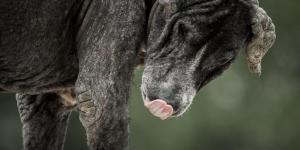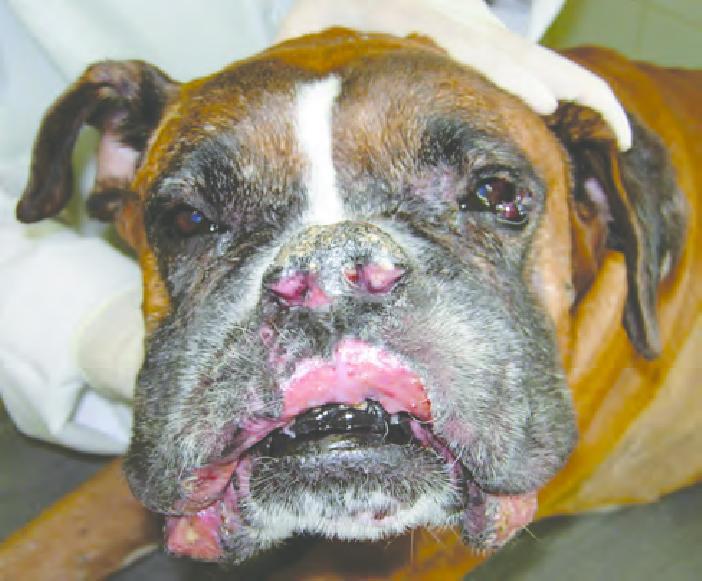Sporotrichosis in Cats and Dogs

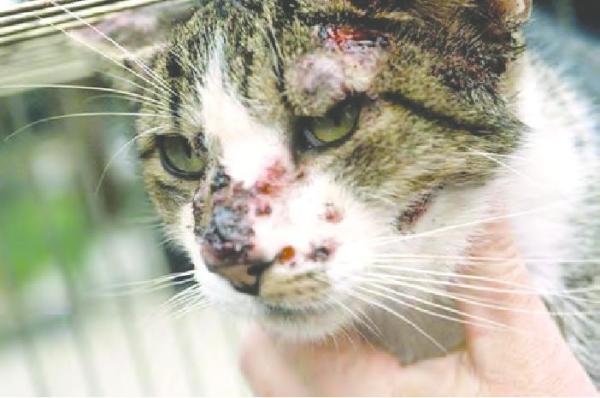
Sporotrichosis is zoonotic, or a disease that can be transmitted from animals to people.The agent of this disease is a fungus, which usually uses a wound on the skin as the perfect means to enter a body.
This terrible disease can affect several animals, including dogs and cats! As it can be transmitted to humans, it is essential to take care of it. This is why AnimalWised has written this article with everything you need to know about sporotrichosis in cats and dogs: symptoms, causes and treatment.
Image:researchgate.net
Sporotrichosis in Cats
Sporotrichosis, also known as rose gardener's disease, is caused by the fungus Sporotrix Schenkii. This fungus is everywhere in nature, so it is not difficult for your pet to have contact with it. Especially cats that have access to the outside, which means they can come into contact with this fungus in the land and in the gardens that they roam about.
This fungus especially likes hot and humid places to breed and that this is why it is more common in tropical climates. The best way to prevent the appearance of this fungus is to always keep the places in your home your cat walks around properly cleaned, especially your cat's litter box!
It is important to note that, according to some studies, transmission from cats to humans is more common than from dogs. Sometimes the animal may not have the disease but be a carrier of the fungus. For example, if your kitten has been in direct contact with this fungus on the street and scratches you during play, it may be enough to transmit the disease. Disinfect the wound quickly!
Sporotrichosis in dogs
In the dog, sporotrichosis is considered rare. Dermatophytoses caused by other agents such as Microsporum canis, Microsporum gypseum and Trichophyton mentagrophytes are more common. In any case, there are some reported cases and so, all care is few. Just like in cats, hygiene is the most important of all, both to make sure your dog gets well from these opportunistic fungi and to protect yourself from contagion.
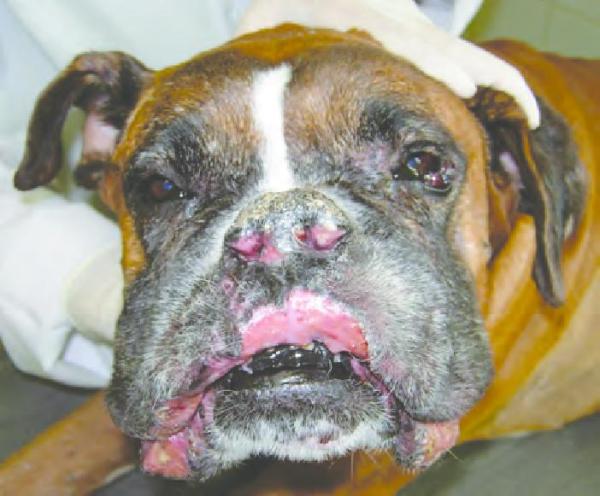
Causes of Sporotrichosis
As we have already mentioned, what causes sporotrichosis is the fungus Sporotrix Schenckii that usually takes advantage of small lesions or wounds to enter the animal's body.
We can consider that there are three types of sporotrichosis:
- Cutaneous: individual nodules on the animal's skin.
- Lymphatic-cutaneous: When the infection progresses and in addition to affecting the skin, it reaches the lymphatic system of the animal.
- Disseminated: when the disease reaches such a serious state that the whole organism is affected.
Symptoms of Sporotrichosis
Unlike other skin diseases, sporotrichosis lesions do not usually cause itching. In addition to the typical symptoms mentioned below, the animals may lose their appetite and consequently, weight.
Sporotrichosis symptoms in cats and dogs
- Firm Nodules
- Areas of alopecia (regions of the body appear hairless)
- Ulcers on trunk, head and ears
In addition, when the disease is disseminated, a number of other clinical signs may be presented, depending on the affected systems. From respiratory, locomotor and even gastrointestinal problems.
Sporotrichosis - Diagnosis
Diagnostic tests will be required by the veterinarian to confirm that the animal has sporotrichosis. This disease can easily be confused with others that present similar clinical signs, such as leishmaniasis, herpes, etc.
These are the most common diagnostic tools:
- Cytology by direct smearing
- Skin scraping
Sometimes it may be necessary to take a fungal culture and biopsy. Also, do not be surprised if your veterinarian needs to perform multiple tests on your pet. Complementary exams are extremely important to rule out possible differential diagnoses, and we should remind you that, without a correct diagnosis, the chances of treatment being effective are much lower.
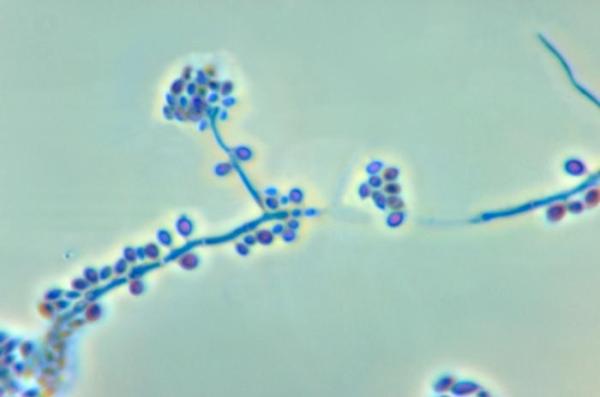
Sporotrichosis in cats and dogs - treatment
The treatment of choice for this problem is sodium and potassium iodide.
In the case of cats, the veterinarian will be especially careful because there is a greater risk of iodism as a side effect of this treatment, and the cat may present:
- Fever
- Anorexia
- Dry skin
- Vomiting
- Diarrhea
Other drugs can be used to help heal injuries, such as imidazoles and triazoles. It is important to note that the use of these drugs can also have side effects such as:
- Anorexia
- Nausea
- Weight loss
If your pet has any side effect of the medication, you should immediately contact the veterinarian who is monitoring the case.
Does Sporotrichosis have a cure?
Yes, sporotrichosis has a cure. For this, you should take your pet to the veterinary clinic as soon as you check out some of the symptoms we mentioned earlier. The earlier the treatment is started, the better the prognosis.
Prognosis of sporotrichosis
The prognosis of this disease is good if it is identified in time and if it is treated correctly. There may be relapses, but they are usually associated with incorrect use of medications. This is why, again, you should never medicate your pet without the veterinarian's supervision, as this act may seem to solve the problem at the moment but worsen your pet's health in the future.
This article is purely informative. AnimalWised does not have the authority to prescribe any veterinary treatment or create a diagnosis. We invite you to take your pet to the veterinarian if they are suffering from any condition or pain.
If you want to read similar articles to Sporotrichosis in Cats and Dogs, we recommend you visit our Skin problems category.
- Londero, A.T. Castro, R. M. Fichman, O. (N. D) Two cases of Sporotrichosis in Dogs in Brazil.
- Souza, N.T. Nascimento, A.C.B.M. Souza. J. O. T Santos, F.C.C.A. Castro, R. B. (2009) Esporotricose canina: Relato de Caso. Arq. Bra. Med. Vet. Zootec. 61(3) p.572-576
- Bernard P et al (1983) Sporotrichosis acquired from a cat. J AM ACAD DERMATOL 8 pp. 386-391



